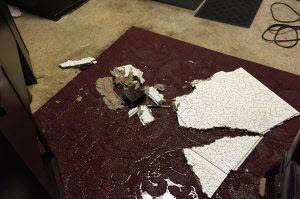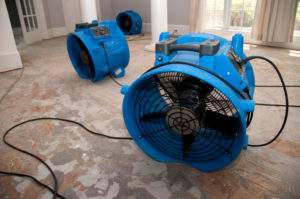What to do with your carpet after a flood

If you’ve recently experienced flooding in your home, you may be wondering what can and cannot be salvaged. The danger, when it comes to water, is mold.
Mold can be very bad news, and can cause everything from mild allergy symptoms to debilitating neurological damage, so you want to make sure you take the proper steps to keep it out of your home. That said, some things are salvageable. And one of those things, if you act quickly enough, is your carpet.
How to Save Your Carpet After Flooding

That said, you are dealing with water, so the risk of electrocution if things go wrong is very real. Before you wade into the water or walk on top of your squishy carpeting, make sure the power to the area you are in is turned off. It’s a good idea to bring in an electrician to ensure you will be safe. They can help you assess that situation safely so that you can begin the cleanup process without risking your wellbeing.
So, you’re safe and ready to get that carpet dry! What steps should you take?
What type of water is it?
Firstly, only move forward without professional help if the water that caused the flooding was clean. If it’s clean water, like from a burst pipe or a foundation leak, you’re safe to move forward with the flooded carpet cleaning on your own, but the flooding came from backed up sewer water, water from a washing machine drain pipe, or any other form of water that isn’t clean, you need to bring in professionals to fully assess the situation and make sure anything unsafe is cleaned up.
It’s much less likely that you’ll be able to salvage your carpet if the source of the water was unclean, but professionals will be able to let you know for sure.
Remove The Water
The most important part of carpet water damage restoration is getting rid of the water as quickly as possible. You can use a wet/dry vacuum (least effective), a carpet cleaner (more effective), or an extractor (most effective). The extractor is recommended, because you really need to get all of that water out as quickly as possible, and it is much more powerful than the other tools available. Run the extractor slowly across the carpeting, as this is more effective than quickly sweeping it across the surface.
Once the water has been removed, peel back the carpeting and remove the pad. It is *sometimes* possible to fully dry the pad, but it is difficult, and sometimes not possible. The pad is much cheaper than the carpeting, so it is generally recommended to just go ahead and replace the pad.
Dry Everything Out

If you can rent a commercial centrifuge blower, this will dry things out much more quickly than your average high-speed fan, and also can be set up to blow beneath your carpeting.
The drying process takes time. Keep the room at or below 75 degrees Fahrenheit to discourage mold growth. Even once you think everything is dry, it’s probably not. Keep fans running 24 hours a day for at least a week. If the weather is dry, also keep windows open during this time, to further air things out and decrease humidity.
Put the Carpet Back Down
Once you’re sure everything is dry, it’s time to lay down the new carpet pad and re-lay your carpet. If you notice a musty smell at any point, it could mean that mold managed to take hold before you could dry everything out, and you may want to bring in someone to check that out and make sure you’re good to go.
But otherwise, congrats! You saved your carpeting!
One Additional Tip
Clearly, there are various parts of your home and many possessions that you need to check for damage and dry out during this whole ordeal. But one thing that is easy to miss, and can cause problems down the line if you forget about it, is your insulation. While your carpet is undergoing the lengthy drying process, check and see how your insulation fared. Insulation cannot be dried, and needs to be replaced if it got wet from the flooding.
If you ever need any help assessing or dealing with water damage, or if you are concerned that mold might have grown due to the flooding, feel free to contact us at Abbott’s Fire & Flood for a consultation. We would love to help in any way we can.
Sources:
https://www.angieslist.com/articles/6-steps-prevent-carpet-mold-after-water-damage.htm
https://www.familyhandyman.com/basement/how-to-dry-out-basement-carpeting/view-all/

